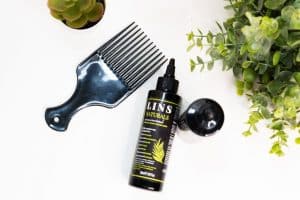
Dealing with Dandruff: What Really Works?
Dandruff is one of the most common scalp conditions that affects people of all ages, genders, and ethnicities. It can be embarrassing and frustrating, leading many to search for effective treatments that work quickly. While it’s easy to be overwhelmed by the sea of anti-dandruff shampoos, DIY remedies, and miracle cures, finding what truly works requires a deeper understanding of the causes, symptoms, and effective solutions.
In this post, we’ll uncover the truth behind dandruff, recommend some tried-and-true solutions, and guide you through building a long-term anti-dandruff regimen. Whether you’re dealing with minor flakes or a more severe issue, this post will provide the information you need to combat dandruff effectively.
Understanding Dandruff: Causes and Symptoms
Before diving into solutions, it’s crucial to understand what dandruff really is. Dandruff results from excessive shedding of dead skin cells from the scalp, leading to visible white or yellowish flakes. Though commonly linked to dryness, dandruff can have several causes, including:
- Seborrheic Dermatitis: A common skin condition that leads to greasy, irritated skin and larger flakes.
- Malassezia: A type of yeast that naturally lives on the scalp but can sometimes grow excessively, causing dandruff.
- Dry Skin: Often confused with dandruff, dry skin can flake and itch, particularly in colder months.
- Product Build-up: Heavy use of hair products like gels, hairsprays, and even shampoos can cause residue to accumulate on the scalp, leading to flakes.
- Psoriasis: A skin condition that causes red, scaly patches, which can affect the scalp and mimic dandruff symptoms.
While dandruff is generally harmless, it can be uncomfortable and, in severe cases, embarrassing. Many people also experience itching, redness, and irritation along with the flaking, prompting a search for effective remedies.
1. Start with Anti-Dandruff Shampoos
For many, anti-dandruff shampoos are the first line of defense. These shampoos are formulated with active ingredients specifically designed to combat the causes of dandruff. Here’s a closer look at some of the most effective ingredients found in these products:
a. Zinc Pyrithione
One of the most commonly used anti-dandruff ingredients, zinc pyrithione works by reducing fungus growth on the scalp. It’s effective in treating mild to moderate dandruff and is widely available in over-the-counter shampoos.
b. Ketoconazole
Ketoconazole is an antifungal agent found in stronger anti-dandruff shampoos, often recommended for more severe cases. It targets the Malassezia yeast that contributes to dandruff.
c. Salicylic Acid
Known for its exfoliating properties, salicylic acid helps remove dead skin cells, reducing flakiness on the scalp. It works well when paired with other anti-dandruff ingredients for a more comprehensive treatment.
d. Coal Tar
Coal tar slows down the production of skin cells, making it effective for both dandruff and conditions like psoriasis. However, it can have a strong odor and may not be suitable for everyone.
e. Selenium Sulfide
This ingredient not only controls dandruff but also reduces oil production, which can be helpful for those with oily, flaky scalps.
2. Home Remedies for Dandruff
While anti-dandruff shampoos can be effective, many people prefer natural remedies for their simplicity, affordability, and gentleness on the scalp. Below are some of the best natural remedies for dandruff that you can try at home:
a. Tea Tree Oil for Dandruff
Tea tree oil is one of the most popular natural remedies for dandruff due to its antifungal and antibacterial properties. A few drops of tea tree oil mixed with a carrier oil, such as coconut or olive oil, can be massaged into the scalp to reduce flakiness and itchiness.
How to Use:
- Mix 5-10 drops of tea tree oil with 2 tablespoons of coconut oil.
- Apply directly to your scalp and leave it for at least 30 minutes before washing your hair.
b. Coconut Oil for Dandruff
Coconut oil has hydrating properties that can alleviate dry scalp and reduce dandruff. It’s also mildly antifungal, making it a good option for combating fungal growth on the scalp.
How to Use:
- Warm up 2 tablespoons of coconut oil and massage it into your scalp.
- Let it sit for an hour or overnight before rinsing it out with shampoo.
c. Apple Cider Vinegar
Apple cider vinegar helps restore the scalp’s natural pH balance and reduce yeast growth. It also acts as a natural exfoliant, removing dead skin cells and product build-up from the scalp.
How to Use:
- Mix equal parts apple cider vinegar and water.
- Apply it to your scalp after shampooing and let it sit for a few minutes before rinsing thoroughly.
d. Aloe Vera
Aloe vera is known for its soothing and anti-inflammatory properties, which can help calm an irritated scalp and reduce dandruff-related itching.
How to Use:
- Apply fresh aloe vera gel to your scalp.
- Leave it on for 30 minutes before washing your hair with a gentle shampoo.
3. How to Stop Dandruff for Good: Building a Long-Term Routine
Dealing with dandruff isn’t always a one-time fix. While there are plenty of treatments to relieve symptoms, preventing dandruff from recurring requires a consistent routine.
a. Shampoo Regularly
One of the most effective ways to prevent dandruff is to shampoo your hair regularly, especially if you have oily hair. A clean scalp reduces the likelihood of yeast and product build-up, both of which can trigger dandruff.
Tip: Choose a mild shampoo that won’t strip your scalp of its natural oils, as excessive dryness can also lead to flakes.
b. Use Anti-Dandruff Shampoo Weekly
Even if your dandruff seems to be under control, incorporating anti-dandruff shampoo into your weekly routine can keep flare-ups at bay. Rotate between your regular shampoo and an anti-dandruff formula to maintain a healthy scalp.
c. Avoid Overusing Hair Products
Heavy use of styling gels, sprays, and creams can cause product build-up, leading to a flaky scalp. Opt for lightweight products and ensure you’re thoroughly washing them out of your hair.
d. Keep Your Scalp Moisturized
Dryness can exacerbate dandruff, so it’s important to keep your scalp moisturized. Natural oils like jojoba and almond oil are great for moisturizing without clogging your pores or leaving behind greasy residue.
4. When to See a Dermatologist
In most cases, dandruff can be treated with over-the-counter shampoos and home remedies. However, if your dandruff persists despite treatment, worsens, or is accompanied by severe itching or redness, it may be time to consult a dermatologist. Conditions like seborrheic dermatitis, psoriasis, and eczema can mimic dandruff but require more specialized treatments.
A dermatologist can prescribe stronger anti-fungal medications or corticosteroids to treat the underlying condition and provide relief.
Conclusion: The Best Approach to Dandruff Treatment
Dealing with dandruff can be frustrating, but with the right combination of products and practices, it’s possible to keep those flakes at bay. Whether you choose to go the natural route or rely on medicated shampoos, consistency is key. Keep your scalp clean, moisturized, and nourished, and you’ll be well on your way to saying goodbye to dandruff for good.
In summary, anti-dandruff shampoos with ingredients like zinc pyrithione and ketoconazole work wonders for mild to severe dandruff. Meanwhile, natural remedies like tea tree oil, coconut oil, and aloe vera can provide relief for those looking for gentler options. Remember to build a routine that includes regular shampooing, moisturizing, and minimizing product build-up to keep your scalp healthy and flake free.



